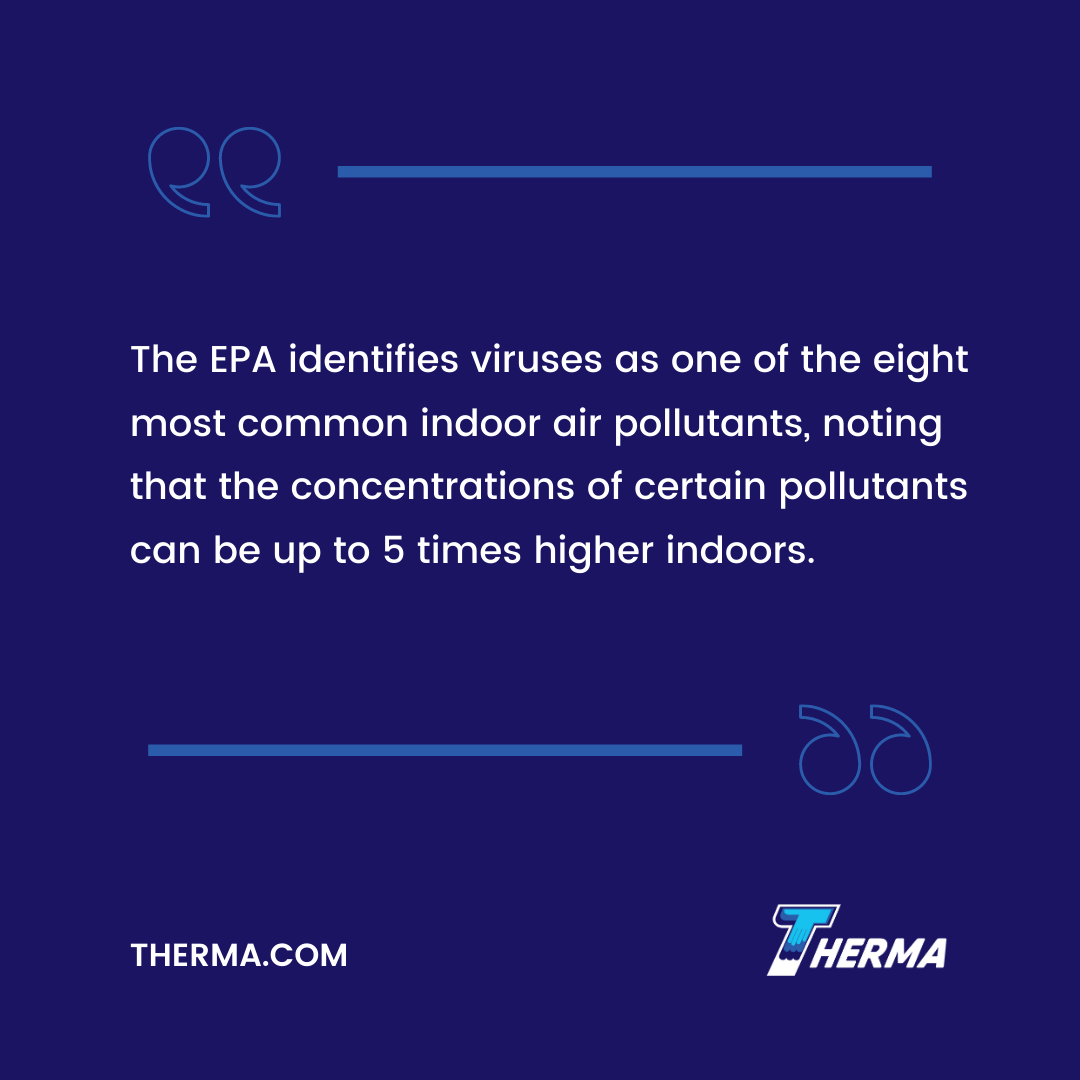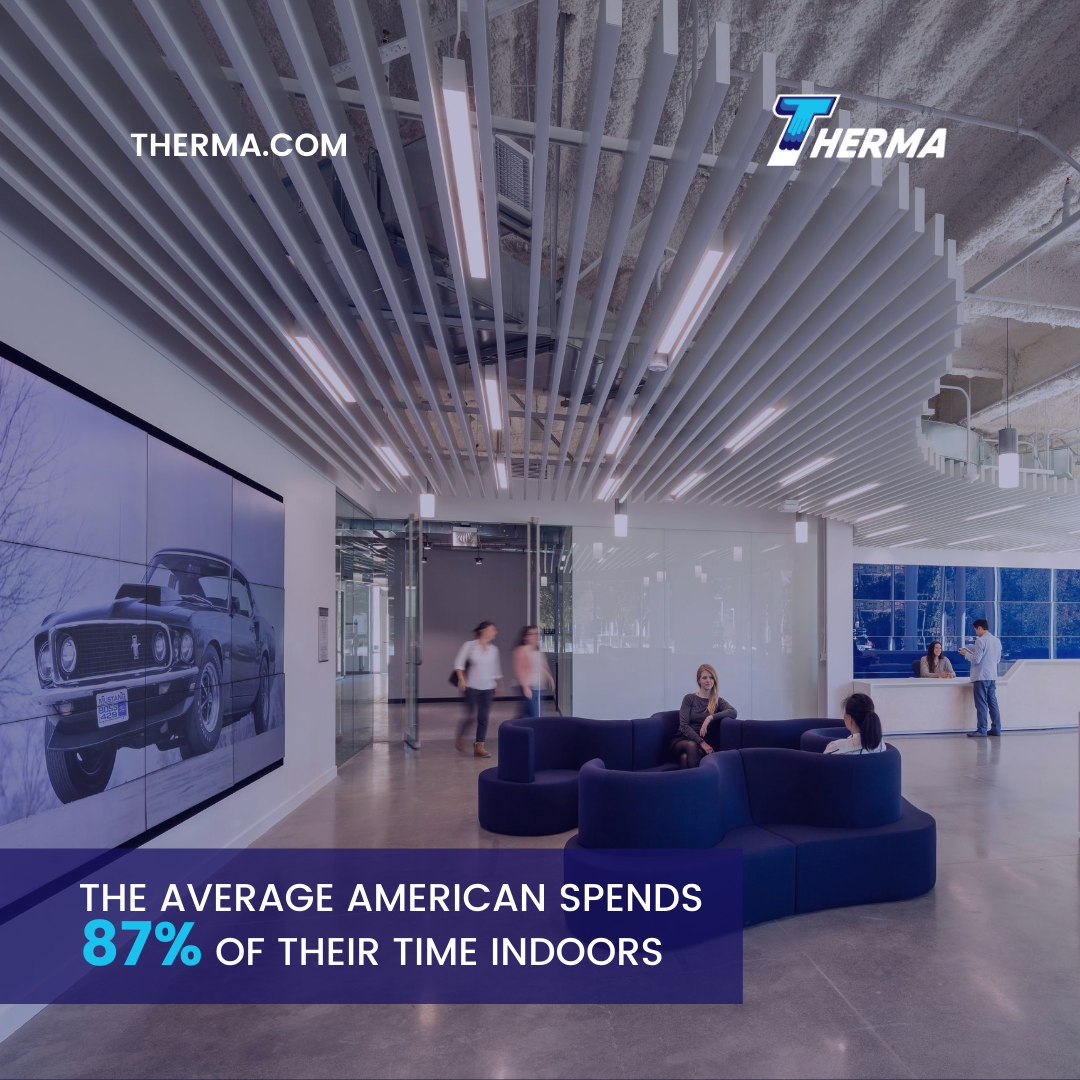The COVID-19 (Coronavirus) pandemic has made building health more important than ever. Implementation of health and wellness-focused safety measures can go a long way toward helping employees feel safer about returning to their workplace, tenants feel comfortable about their occupancy and consumers feel at ease as more retail establishments reopen.
Why Healthy Buildings Are Important
Facility managers understand the impact building health has on widespread building activity, impacting everything from occupancy to operations–and that was before COVID-19 when the average American spent 87% of their time indoors. Because of coronavirus shelter-in-place directives and new telecommute work arrangements, that indoor occupancy has increased to almost 100%.
Issues tied to health and well-being are gaining importance as occupants become increasingly more concerned about the role their building plays in exposure to COVID-19. Facility managers are finding themselves called upon to understand and address both the practical and cognitive aspects of healthy building facilities management during a global pandemic.
Ventilation and Indoor Air Quality (IAQ)
The quality of the air we breathe has a direct impact on our overall well being. Air pollutants pose a severe health threat contributing to one-third of all deaths from heart disease, lung cancer and stroke globally.
Reducing or eliminating common indoor air pollutants can help reduce the risk of short-term effects, such as eye, nose, throat irritation, headaches, fatigue or dizziness, or longer-term effects, including respiratory or heart disease, or even cancer. The EPA identifies viruses as one of the eight most common indoor air pollutants, noting that the concentrations of certain pollutants can be up to 5 times higher indoors.

Healthy Building Certifications: The New Normal
COVID-19 has already drastically changed the way we live, work and play, which means more focus on building health. Third-party healthy building certification like LEED, Fitwel and WELL will likely become the new standard for post-COVID builds.
The International WELL Building Institute (IWBI) is leading the healthy building movement with its WELL Certification. They offer a detailed building project framework that promotes health and wellness. WELL Building Standard is certified by The Green Business Certification Incorporation (GBCI), in addition to administering the LEED rating system. WELL and LEED certifications are complimentary.
LEED (Leadership in Energy and Environmental Design) is a global platform that emphasizes building efficiency and sustainability. It is arguably the most widely used green building rating system globally and is available for almost all building types and phases. Certification confirms buildings adhere to LEED’s “healthy, highly efficient and cost-saving green building” framework.
Fitwel emphasizes health-promoting building construction and design and is partnered with The Centers for Disease Control and Prevention (CDC) for evaluation and research. Recognizing COVID-19’s impact on linking design and operational built environment practices with public health outcomes, they’ve launched a new safety module focused on mitigating viral transmission.
Healthy Buildings and the Fight Against COVID-19
In a focused, collective effort to help move the country toward a safer living and working landscape, The U.S. Conference of Mayors, the official nonpartisan organization of city Mayors (with populations > 30,000) have come together to pass the Advancing Healthy Buildings in the Fight Against COVID-19 resolution.
Citing Green Communities 2020, in addition to WELL’s Building Standard and Health-Safety Rating for Facility Operations and Management, the resolution is designed to encourage community and city leaders to leverage these tools for both private and publicly-funded buildings.
IWBI President Rachel Gutter highlighted the vital role of facility managers and others who tend to their buildings as “front-line caregivers in COVID-19 response and recovery.” Adding that cities can “ensure they are at the forefront” when it comes to combating COVID-19 while advancing “public health for all.”
IWBI COVID-19 Task Force
Formed in response to the initial pandemic surge, IWBI formed their own nearly 600-member task force composed of government officials, virologists, public health experts, business leaders, academics, building scientists, designers, architects and real estate professionals. One of the earliest outcomes of the group’s efforts was the WELL Health-Safety Rating aimed at prioritizing “health and safety in a post-COVID-19 world.”
In June, IWBI announced the use of WELL’s Health-Safety Rating for all buildings and facilities, regardless of type.
With COVID-19s respiratory nature, indoor air quality and HVAC systems are likely to be at the forefront of most people’s minds as they return to their workplace. A building focused on assuring occupants of a healthy environment will also have a significant positive impact on productivity and a reduction in absenteeism. Those buildings that can do so will contribute to the peace of mind of their occupants but will position themselves to best weather the COVID-19 landscape.
If you’re interested in learning more about improving your building or facility’s health, the healthy building experts at THERMA are ready to help.








